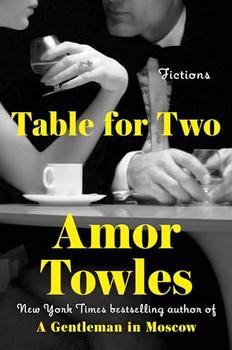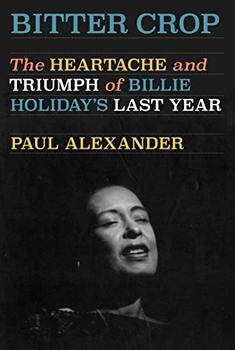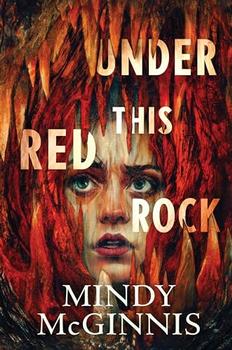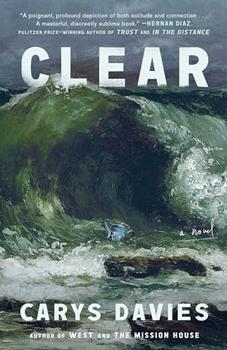Paula Kamen, author of All In My Head, discusses her 15-year headache, the many treatments, conventional and otherwise, she has sought and her views on how the medical community supports people with chronic pain.
Your book is about a headache that you've had, continuously, for over a
decade. How did it start?
Well, my Headache and I are actually celebrating our 15-year anniversary
together soon. I think it's the paper anniversary, or the crystal one, I'm not
sure.
I have what has been officially classified by doctors in the last decade as
"chronic daily headache," or headache that happens at least 15
days/month for at least four hours at a time. (In past decades, this has been
called a "mixed headache," meaning a mixture of migraine and tension
headache.) Recent studies show that this afflicts 4 percent of the population. I
am "lucky" to have the type that is CONSTANT, hitting about .5 percent
(about the same number that have epilepsy) of the population. But since chronic
headaches are mainly experienced by women of reproductive age, chronic daily
headache is thought to happen to 10 percent of them.
When did it start?
I got my first real bad one in the spring of 1991 as I was
putting in a contact lens, and the left one seemed to set off a mother of a
headache in the left eye and behind it. I stopped wearing the lenses, but then
the pain just started happening on its own. Over the course of about six months,
it became continuous. But knowing what I know now about chronic pain, I think it
had been building up and gaining steam behind the scenes for a while, but it
wasn't bad enough to really notice.
Describe the headache for us. How bad is it on a scale of one to ten, and how
do you manage it on a daily basis?
It's usually moody, largely cruel, and always absurd. It's about a 4 on most
days most of the time, fluctuating between 2-6 through the week.
Through the years, I have learned a lot about managing pain and still trying
to live life in the present, despite it all. In the book, I call this state of
mind, "The Waiting Place." It's when life is not ideal, but you still
have to go on the best you can. I have learned how to live in this place through
trial and error, the hard way, as I probably have learned everything in life.
Much of it has to do with very simple principles, such as getting enough sleep
and keeping a slow and not frenetic pace. I work about 4-6 hours/day, at the
same time every day, instead of about double that and at all hours, which is
what I did before this happened. Sometimes I feel lazy, but I have to remind
myself that in some cultures, this would be normal. I'm not a slacker. I'm just
acting like I'm Swedish!
As I discuss in the book, I also have been helped in daily life by Eastern
philosophy--by learning how to better detach myself emotionally and mentally from
the pain. It doesn't always work, and is much easier said than done--but I'm in a
better place than in the beginning when I was constantly embroiled in
frustration and anger with it. So much of suffering is not just physical pain,
but all the meaning we give to it.
What treatments--conventional and otherwise--did you seek? Or would it be
easier to tell us what treatments you didn't seek?
Yes, to best boil it down I would say I did NOT do:
· Colonic irrigation OR
· Jews for Jesus
I did traditional Western medicine for years (which means, basically, lots
and lots of drugs) and then alternative medicine in its myriad forms. The good
and the bad news is that when you have a headache, there is an ENDLESS amount of
things that you can do about it. Endless. It seems that about everyone I have
met gives me a referral to what supposedly worked for them or their cousin or
their neighbor. Then I feel compelled to try it, in case it is THE ONE thing I
have been waiting for to cure me.
Like most people with chronic pain, I now use both Western and alternative
medicine. Over the years, I have learned how to be more judicious with both, to
advocate for myself to avoid dangerous drugs and also flushing too much money
down the toilet with those thrice weekly acupuncture or chiropractor sessions.
Chronic pain causes more disability than cancer and heart disease combined.
Yet we hear much less about it. Why do you think that is?
Well, an unfortunate and tragic thing is that there are no famous celebrities
with chronic pain--or at least that have felt safe enough to "come out"
with it. In this country, no disease is real until a Big Star gets it. I'm
waiting for the Michael J. Fox or Christopher Reeve of Headaches to emerge. I
was recently excited to learn that the lead singer of the band Wilco, Jeff
Tweedy, has bad migraines, but I am not sure if he's a household name. Lynda
Carter, who played Wonder Woman in the 1970s TV series, has come out with back
pain, but her show may have been too long ago for most folks to remember.
Other reasons why chronic pain is only really coming out now: It mainly
happens to women, therefore devaluing it as "real." It lacks drama,
like the cancer victim on the deathbed. There are no pink ribbons for us, as
public awareness is just starting. No one is running a marathon for me! And it's
not necessarily deadly (except, of course, for being a typical motivation for
suicide, such as depression is). And, like other neurological problems, chronic
pain is a very INVISIBLE form of disability.
Chronic pain as an issue compares most closely to that of depression, which
probably was in the same point of beginning public acceptance a decade ago. (By
the way, chronic headaches and depression are very similar neurologically, with
some just seeing them as two different sides of the same coin.) At that time,
depression became more legitimized as "real" because of the
effectiveness of Prozac, which showed that this disorder is a chemical
imbalance, not the person just being lazy. Also, well-known memoirs, like
Elizabeth Wurtzel's Prozac Nation, helped build awareness.
So chronic pain has really lacked that kind of "blockbuster" drug
to legitimize us, to also conquer stereotypes (of pain as a moral failing,
unique to affluent whiners, etc.). It's true that those with more episodic
migraines have gotten some legitimization with the generally effective triptans,
which were first introduced in the 1990s. That includes Imitrex, Relpax, Amerge,
etc. But those of us with constant headache have not been as fortunate in our
treatment.
And all types of chronic headaches, such as migraine, carry much stigma
because not only are their primarily experienced by women, but they are made
worse by hormones (associated with crazy emotions) and take place in the head
(associated with mental facilities).
In general, how well do you think the medical community supports those with
chronic pain? With headaches, specifically?
I consider this book partly an "exposé" about how completely
inadequate pain-care is, including the limited types of drugs that are
available--at least over the long term. The over-the-counter (OTC) medications
cannot be taken daily, or else "rebound" headaches often occur. The
stronger medications, like narcotics, can turn one into a drooling zombie. The
daily "preventives" available for chronic daily headache (which I
have) are inadequate, typically with lots of side effects and low effectiveness
rates.
But many people with pain do not know this, thinking that they are the
"only ones" who are "unresponsive" to drugs and "mind
over matter." For years, for this reason, I was loaded with guilt and
self-blame.
The irony is that modern technology has indeed progressed so much, to be able
to fix technical things like excising a brain tumor or re-attaching a severed
arm. But when it comes to something apparently simple like a headache, it comes
up short. In reality, not only do we need better drugs, but treating pain also
requires much individualized treatment, as each case is different. This requires
a time commitment for communication between doctor and patient, which is more
expensive than just something like giving someone a shot. And research has
really lagged behind in this area. While pain accounts for 20 percent of medical
visits and 10 percent of prescription drug sales, it only represents 0.6 percent
of National Institutes of Health research funds.
According to the Centers for Disease Control, the prevalence of migraine has
increased sixty percent over the past decade. To what is this increase
attributed?
Part of it, I think, is awareness. I think that chronic headaches have not
gone up, but awareness of them has. Just like I don't think that sexual
harassment and acquaintance rape or people being born gay have gone up over the
past decade, but public consciousness of it has. The good news is that younger
women (who are at a time of life where people first typically get chronic
headaches) now feel a greater sense of entitlement to "come out" about
them, not just seeing them as "just life." This is true in feeling
more of a sense of entitlement to not be sexually harassed or raped, even if we
were wearing "sexy" clothing, or feeling entitled to "come
out" about other things, such as being a lesbian.
I also think that rampant use of over-the-counter medications is causing
"rebound headaches" in many people, making their pain worse. Oddly,
most people do not know about this extremely common effect.
How has this headache changed your life? Your relationships?
Having chronic pain influences EVERY aspect of life. Again, I compare the
experience of it to depression, where it's something "invisible" and
stigmatized that you're secretly struggling with. As far as career, I am lucky
that I am in a profession, as a freelance journalist, to be able to make my own
hours and work at those times of day when I feel better. As proof that my
management skills have improved, my last book took me 8 years, and this took
fewer than 2. Overall, I have to just make sure to ration my energy very
carefully. I have enough to get by, but no surplus.
But as far as with my personal life, as a single person, things have gotten
easier recently. As I get older (I'm 37) I see that everyone has something, some
sort of baggage they bring to the table (such as a divorce, kleptomania, being a
control freak, some other neurosis). That's a "good" thing about
getting older--others are increasingly finding their limits, like me. I'm also
grateful that so many men are so self-absorbed that they don't notice when I'm
practically doubling over in pain.
An estimated 45 million Americans suffer from chronic pain. According to a
2002 Time magazine article, at least 28 million Americans battle chronic
headaches, specifically. What advice do you have for them? For their family and
friends?
A message to all of them: this is a real neurological disease, possibly a
progressive one if not treated properly, and it should be taken seriously. A
MAJOR confusion on the part of friends and family is that it is "just
stress." This confuses a trigger with the root cause (a neurological
over-excitability of the brain). In reality, yes, stress and emotion can make
pain worse. But this is like with any other disease, such as diabetes or
Parkinson's. The reality is that the person has to have a genetic predisposition
to chronic headache. Some people's brains aren't even wired to be able to have
headaches at all. And, besides, most headaches do not have any one identifiable
trigger (such as stress or eating the wrong foods or weather changes). So too
often, too much pressure is put on the chronic-headache sufferer to
"control" the environment. This is a double standard that I don't see
with other diseases.
In what way is this a women's issue?
Like I said, we just have to look at the numbers to see why: In the past
decade, new data has become available to prove this, such as the following:
Why does chronic pain hit women more?
We are basically more wired
neurologically for it. In the past, Freudian psychoanalysis explained pain as
mostly mental in nature, as "psychosomatic." But now, recognizing real
neurological differences that cause this, thanks to modern brain scans in part,
doctors are using the brand-new word "neurosomatic," which is much
more validating. Women also have the added triggers of hormones, which can make
pain worse. And their differing immune systems may also contribute to the
effect.
But it's important to also state that men have their own share of disorders;
they are much more likely to be autistic, schizophrenic, suicidal, and
alcoholic. And there is great variation even among those of the same gender,
where just being a woman does not mean that one will get chronic pain, just like
being a man doesn't mean that one will be autistic.
But I think it's important to start framing chronic pain as a women's issue
for political reasons, to encourage more social support, organizing, and
awareness, and make links among all these pain syndromes as related. We need to
unite to see this as a common cause. The women's health movement, a separate
branch of the women's movement that emerged in the 1970s, did wonders for the
field of obstetrics and gynecology, such as transforming a woman's childbirth
options. But we still have a LONG way to go in neurology, which has been
dominated by men and has been more "invisible" in nature to tackle.
Also, like gays before the last decade, we have had a big reason to
"stay in the closet." After all, women have been struggling
politically to prove that we are NOT weak, that we are "just like everyone
else," and so these issues, involving differences, have not been in vogue
for the movement to discuss publicly.
But now, 40 years after the Second Wave of feminism, I'm hoping that as a
member of the next generation (and that is the focus of my last two books), I
can now feel secure enough to talk about women's "weaknesses" as well
as their strengths. After all, even Wonder Woman has chronic pain! (This
dialogue is parallel to younger women feeling more entitled to talk about a
preference to be a stay-at-home mom or ask about family leave. They have less to
prove now.) We know that we can have weaknesses as women, (like men do) but
still deserve equal rights.
The title of your book has a double meaning, does it not?
Yes, speaking of Freud, medical and popular views of chronic pain through the
past 100 years have been very demeaning to patients, largely blaming it as being
"all in our heads." In the late 19th century, in a concerted effort to
be "scientific," doctors stated that if something is not
"visible," such as under a microscope, then it doesn't exist. So then
the treatment of pain was passed on from doctors to psychiatrists. But this is
reversing somewhat with new brain scans that show real neurological events
related to it.
But this legacy still remains, sadly. As a result, besides having to deal
with the pain, the chronic pain sufferer also suffers from constantly being
"on trial." Stereotypes thrive of us as malingerers, complainers,
etc.--and, as a result, we constantly are in the position of staying in the
closet about it or trying to "prove" the pain as real.
We still have a long way to go to recognize chronic daily headache as a
neurological disease in the public. We need to work to counter the Freudian
analysis of "secondary gain," which views chronic pain as especially
psychosomatic when it's most severe. Then it is seen as a "motivation"
to avoid something else. But in reality, we all have things in life we would
like to avoid and someone can always find a "secret motivation" in
anyone for having it.
Did other books inspire you to write this one?
Yes, I was most inspired by Caroline Knapp's 1996 memoir Drinking: A Love
Story. I admired how she portrayed a very common "secret" world that
defines so many lives. Like alcoholics, chronic pain sufferers are constantly
hiding a large part of their lives. I also liked her innovation of complementing
her memoir with research, so that the story did not just start and end with
herself. This also helped the reader understand her experiences more, put them
in context, as not just totally idiosyncratic or unique to her.
As a journalist, I went a bit further with even more reporting in this book
because headaches are SO MISUNDERSTOOD. I couldn't just tell ONLY about my
experience because I would seem totally insane. I had to give statistics about
this ailment and interview others about their experiences. I also went a step
further to make this book a black comedy, which happened naturally, because of
the sheer absurdity of trying so many crazy treatments in desperation and having
a stupid headache for 15 years. I also, actually, have always been very
interested in humorous writing, writing satires for quirky magazines for years,
but have never had quite the chance to do it in book form.
I was also influenced by major memoirs of my "formative" years that
helped to destigmatize depression, such as Susanna Kaysen's Girl, Interrupted
and Elizabeth Wurztel's Prozac Nation. Besides Drinking: A Love
Story, probably
the book most similar to mine in memoir and reporting style is Andrew Solomon's
Noonday Demon, about depression.
How is your headache right now?
About average. Maybe a bit worse, a 5 out of 10, since I was up late last
night. I turned in the book to the publisher today! But, that's to be expected.
Once in a while, the pain patient has to accept that it's going to be worse on
some days, but it's worth it to participate more fully in life.
Unless otherwise stated, this interview was conducted at the time the book was first published, and is reproduced with permission of the publisher. This interview may not be reproduced or reprinted without permission in writing from the copyright holder.





The Flower Sisters
by Michelle Collins Anderson
From the new Fannie Flagg of the Ozarks, a richly-woven story of family, forgiveness, and reinvention.

The House on Biscayne Bay
by Chanel Cleeton
As death stalks a gothic mansion in Miami, the lives of two women intertwine as the past and present collide.

The Funeral Cryer by Wenyan Lu
Debut novelist Wenyan Lu brings us this witty yet profound story about one woman's midlife reawakening in contemporary rural China.
Your guide toexceptional books
BookBrowse seeks out and recommends the best in contemporary fiction and nonfiction—books that not only engage and entertain but also deepen our understanding of ourselves and the world around us.